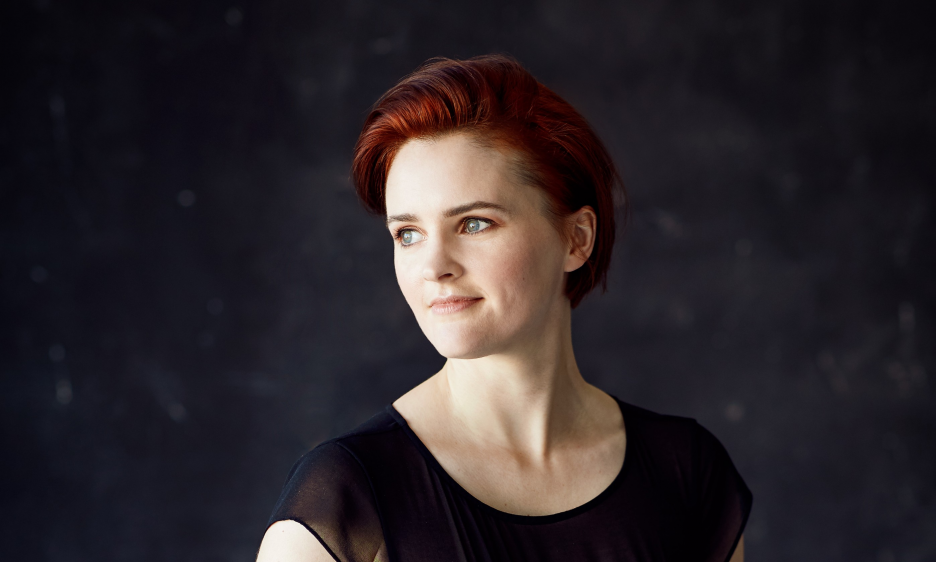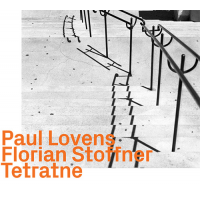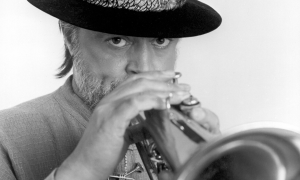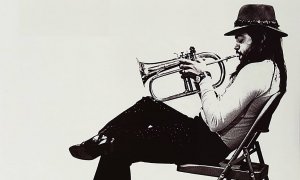Home » Jazz Articles » Catching Up With » Claire Cowan: Jazz in Ballet
Claire Cowan: Jazz in Ballet

Courtesy Royal New Zealand Ballet
The new ballet is set in the 1920s, when jazz was heard everywhere in the world, particularly in hedonistic German cities. The score includes American jazz swing, boogie-woogie, Charleston, even Argentinian tango rhythms, making it equally of that time.
In an exchange with Claire Cowan, All About Jazz explored deeper into the process of the composition and the particular restrictions and constraints which became apparent working with the high art of ballet.
All About Jazz: The first question is where is the Jazz?
CC: The jazz parts of the ballet take place in Act 2, aside from a few snippets of swing in Act 1. In Act 2, we are in the domain of the Witch's gingerbread house. Her world is a fantasy, glitzy world of excess, and the harmony is thick and full, lurching from one chord/key to the next, in an inelegant way, as only a witch can do. Within Broadway-esque fantasy numbers we sneaked in tangos, boogie-woogie and grand fanfares for the entries of bounteous amounts of food.
AAJ: How did you make the transitions from classical to jazz technically?
CC: I had a drum kit within the orchestra which quite often just starts to swing and then things go from there. I still used some of the same melodies I'd built up in Act 1, but reinterpreted them through more colourful jazz lenses. Act 2 is a bit of a stark contrast in style from Act 1 and therefore I didn't have to make the transition musically—it just opens the curtain to a whole new musical world for the second half.
AAJ: You did not simply change classical 7ths to jazz 7ths, for example?
CC: No, although I had some advice from an expert about appropriate chord structures and basslines for the 1920s. He also helped with some stylistic details such as voicings which added authenticity to the style I was going for.
AAJ: This is set in the 1920s, how evident and important is that in the production?
CC: The costumes, set and stylistic features of the ballet are derived from the 1920's silent cinema of Germany. There were many references to famous films of the era and my cinematic approach to the music was deliberate in that respect. I'd also never scored a ballet and thought best to stick with what I knew— writing music for films.
AAJ: Is the production still set in the Black Forest of Southern Germany?
CC: Our forest was stylized and instead of trees, it was made of silverware. But yes, vaguely German-inspired too.
AAJ: What limitations do the physical and dramatic ballet constraints impose on you when composing?
CC: Tempi and time signatures are the main restriction. If you start writing too fast, then the dancers will halve the counts and it will actually be too slow—so it's finding that happy 'danceable' tempo. Also the choreographer begged me not to do 5's and 7's but I went ahead and did them anyway—the dancers get used to it. But there was a particularly tricky scene in 7/4 where the child extras had to count in seven.
AAJ: Do you find it easier to compose fresh from zero as opposed to inserting jazz rhythms into an established classical piece?
CC: Yes, although I've done both. It's certainly easier to have that intention in the first place and then make the classical instruments do their best with the jazz rhythms.
AAJ: This was clearly a major effort; can you please say how long it took and how much collaboration you had with the choreographer to allow enough time for the physical movements of the dancers to each tell their part of the story.
CC: About a year and half in planning and about 7 months of writing, editing, musical score prep. The choreographer listened every day to my output and then sometimes would choreograph straight away and ask for 8 bars more, or 1 min more etc. We worked very closely together and he was always available to listen should I need him to test a tempo or see if he could 'hear' what was happening in a particular scene.
AAJ: How did your classical training in strings and keys help you to reach this point as a composer?
CC: I'm very thankful I was a string player before I became a composer— because strings seem to me the most complicated of instruments, and writing well for them takes a composer who knows the difficulties in playing them. The keys training of course is very useful to be able to hear things and play them supported by harmonies at the keyboard and then directly into MIDI information in the computer. If I had to write in one line at a time things would be much slower! I have played piano since I was a kid so it comes naturally to compose at the piano. It's great to demonstrate to commissioners what I'm thinking, just at the piano before it turns into a fully orchestrated composition.
AAJ : Claire Cowan, thank you for sharing this insight to your new composition with All About Jazz readers. Congratulations on the success of the performances of your work.
CC: Thank you. For those interested in hearing the result, Hansel and Gretel has been recorded by the New Zealand Symphony Orchestra https://clairesmusic.bandcamp.co m
The interview had ended. On reflection afterwards, the way in which jazz is being woven into the classical arts here, to make them more accessible, is a use of the depth and breadth of the whole language of music in composition. Many jazz musicians too, have explored the rich vein of classical themes, weaving their own improvisations around some of the best known music. Duke Ellington produced a series of classical interpretations in the 1960s, notably on Grieg's "Peer Gynt Suite" and Tchaikovsky's ballet "The Nutcracker." Both were recently performed by Justin Varnes and his band Meanwhile, Noel Freidline combined his jazz trio with a classical string quartet for his compositions based on Beethoven's 5th symphony, Barbers Adagio for strings and Vivaldi's Four Seasons, performed in March 2020 to great acclaim at the Museum of Modern Art in Colombia SC. Freidline is now exploring the extensive groundwork laid in the music of Bach by Jacques Loussier.
However we may look at the dividing lines between genres, it is all one worldwide language. It's all music.
Tags
Profile
Claire Cowan
Martin McFie
New Zealand
Auckland
Duke Ellington
Justin Varnes
Noel Freidline
Jacques Loussier
PREVIOUS / NEXT
Support All About Jazz
 All About Jazz has been a pillar of jazz since 1995, championing it as an art form and, more importantly, supporting the musicians who make it. Our enduring commitment has made "AAJ" one of the most culturally important websites of its kind, read by hundreds of thousands of fans, musicians and industry figures every month.
All About Jazz has been a pillar of jazz since 1995, championing it as an art form and, more importantly, supporting the musicians who make it. Our enduring commitment has made "AAJ" one of the most culturally important websites of its kind, read by hundreds of thousands of fans, musicians and industry figures every month.























